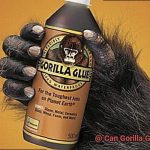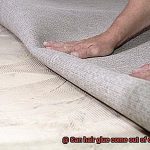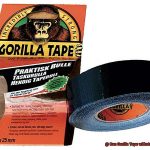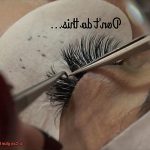Picture this: you’re in the middle of a DIY project, armed with your trusty Gorilla Glue. Known for its unrivaled bonding strength, this adhesive has become your go-to companion for all things fix-it. But wait, a thought crosses your mind – can Gorilla Glue actually go bad?
Determining the shelf life of adhesive like Gorilla Glue is crucial to ensure top-notch performance and safety during your projects. In this blog post, we’ll embark on an adventure into the world of Gorilla Glue, exploring whether it can expire and what happens when it does. Along the way, we’ll uncover telltale signs of a bad batch and share important precautions to take when working with this powerful adhesive.
Effects of Expired Gorilla Glue:
Contents
- 0.1 Effects of Expired Gorilla Glue:
- 0.2 Identifying Expired Gorilla Glue:
- 0.3 Precautions when Using Gorilla Glue:
- 1 What is Gorilla Glue?
- 2 Types of Gorilla Glue
- 3 Shelf Life of Gorilla Glue
- 4 Proper Storage for Maximum Shelf Life
- 5 Curing Process and Its Effects on Shelf Life
- 6 Signs of Expired Gorilla Glue
- 7 How to Test if Gorilla Glue Has Gone Bad
- 8 Disposal of Expired or Unusable Gorilla Glue
- 9 Conclusion
Over time, factors like air exposure, temperature fluctuations, and moisture can wreak havoc on even the mightiest adhesives. When Gorilla Glue goes bad, its once formidable bonding power may dwindle into mere mediocrity.
Using expired or degraded glue can lead to weaker adhesion and compromised durability. Imagine your hard work crumbling before your eyes because of a subpar bond – not exactly an ideal situation. That’s why understanding how to spot expired Gorilla Glue is essential.
Identifying Expired Gorilla Glue:
Fear not. There are clues that can help you decipher whether your Gorilla Glue has seen better days. First off, pay attention to its consistency. If it’s thicker than usual or contains pesky lumps, chances are it’s solidifying beyond redemption.
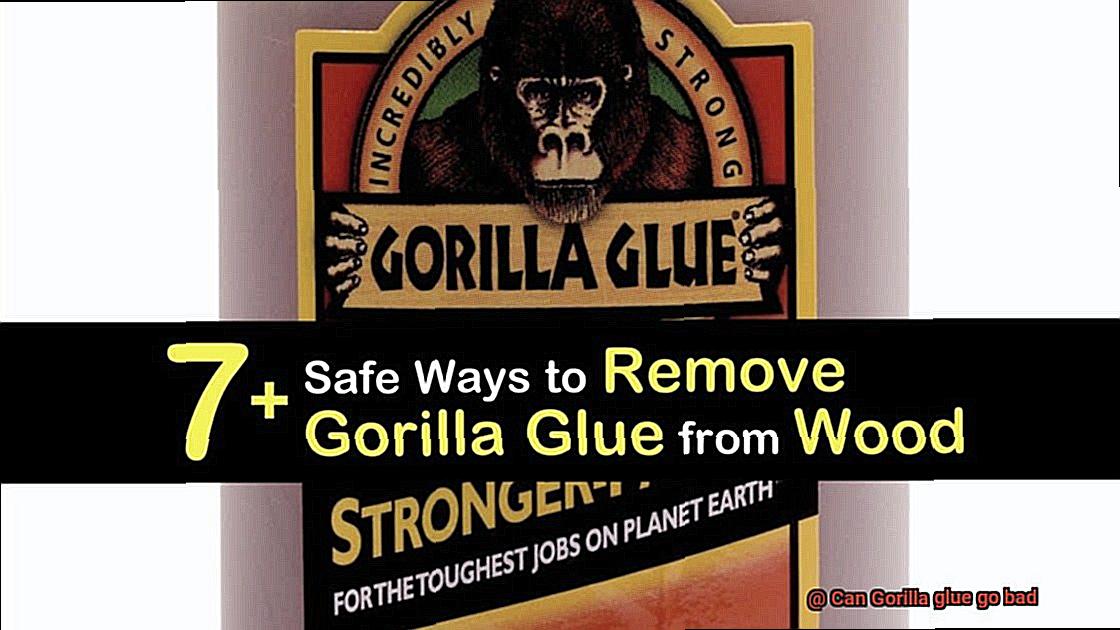
Next up: that unmistakable scent test. If your glue emits an odd odor or smells downright rancid, it’s probably past its prime – time to bid it farewell.
And don’t forget to check the expiration date on the packaging. Gorilla Glue typically boasts a shelf life of one to two years from its manufacturing date. Once that time is up, you might want to rethink relying on its adhesive powers.
Precautions when Using Gorilla Glue:
Whether your Gorilla Glue is fresh as a daisy or has seen better days, taking precautions while working with this mighty adhesive is a must. Slip on those protective gloves to shield your skin from potential irritations. And remember, good ventilation in your workspace will
What is Gorilla Glue?
Gorilla Glue is a popular adhesive that has gained a reputation for its strength and versatility. It is a type of polyurethane glue that is designed to bond various materials together, making it ideal for a wide range of applications.
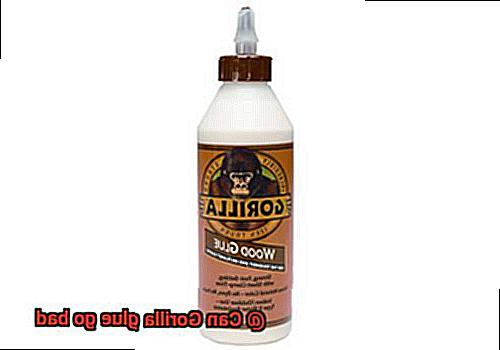
One of the key features of Gorilla Glue is its strong adhesive properties. When applied to surfaces, it forms a durable and long-lasting bond. This makes it perfect for repairing broken objects or creating crafts and DIY projects.

Gorilla Glue is known for its versatility as it can be used on various materials including wood, metal, glass, ceramics, and foam. This makes it a go-to adhesive for many different projects.
Another notable characteristic of Gorilla Glue is its water-resistant nature. Once it cures, it becomes waterproof, making it suitable for both indoor and outdoor use. This adds to its durability and makes it resistant to moisture and other environmental factors.
In addition to its adhesive and water-resistant properties, Gorilla Glue also expands slightly as it cures. This expansion fills in gaps and creates an even stronger bond. This feature can be beneficial in applications where a tight seal or fill is needed.
Gorilla Glue comes in various forms including liquid glue, glue sticks, and adhesive dots. Each form has its own advantages and is designed to cater to different needs and preferences.
Types of Gorilla Glue
Gorilla Glue offers a variety of options for different bonding needs. The original Gorilla Glue is perfect for projects that require a strong and waterproof bond. Gorilla Super Glue provides instant bonding for small repairs and delicate materials. Gorilla Wood Glue is specifically formulated for woodworking projects, while Gorilla Epoxy offers a two-part system for high-strength bonding. For heavy-duty projects, Gorilla Construction Adhesive is the ideal choice, and for applications where an invisible bond is desired, Gorilla Clear Glue is the go-to option.
Choosing the right type of Gorilla Glue for your project is crucial in achieving the best results. Consider factors such as the materials you are bonding, the conditions the project will be exposed to, and the desired strength of the bond. Always follow the instructions provided with each type of glue to ensure proper application.
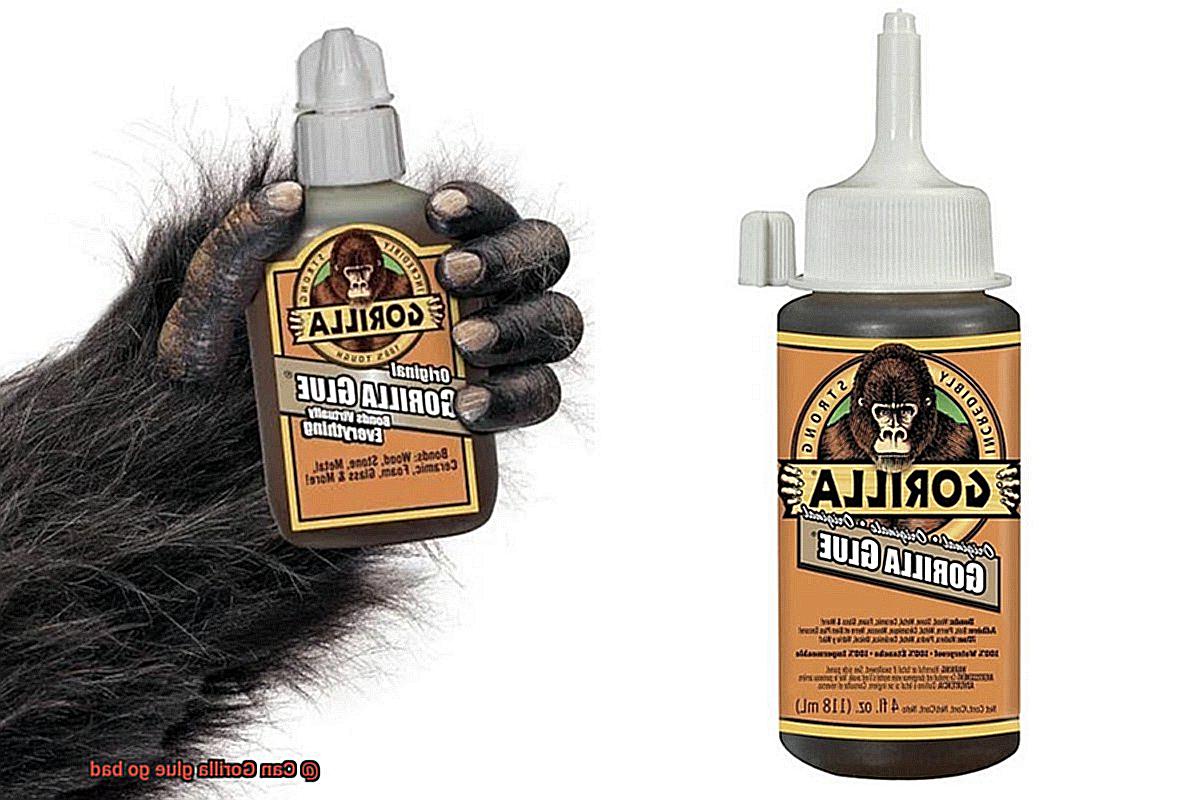
Proper storage is also important in maintaining the longevity of your Gorilla Glue. Keep it in a cool and dry place, away from extreme temperatures and moisture. If you suspect that your Gorilla Glue has gone bad, check for changes in consistency or an unpleasant odor. In such cases, it is best to dispose of the glue and get a fresh bottle.
Shelf Life of Gorilla Glue
Gorilla Glue, the adhesive of choice for all your bonding needs, possesses a shelf life that merits attention to ensure peak performance. To maximize the lifespan of your glue, proper storage and handling are vital.
So, how long can you expect Gorilla Glue to last? An unopened bottle can remain potent for up to two years if stored in a cool, dry place. With this generous timeframe, you can tackle multiple projects with ease. Just remember to keep the bottle tightly sealed, thwarting any attempts by air and moisture to infiltrate.
However, once the bottle is opened, the shelf life takes a hit. Exposure to air triggers the glue’s curing and hardening process, impairing its effectiveness over time. To combat this challenge, squeeze out excess air from the bottle before resealing it securely. Clever users even store the bottle upside down, preventing air from compromising the glue’s usability.
Keep in mind that even if your Gorilla Glue has expired or surpassed its shelf life, it may still be usable depending on its condition. However, its efficacy and bonding strength may be compromised. For safekeeping, watch out for telltale signs of spoilage. If you detect thickening or hardening, changes in color or consistency, or an unpleasant odor, it’s wise to steer clear and acquire a fresh bottle for your project.
Proper Storage for Maximum Shelf Life
Proper storage is essential for ensuring the maximum shelf life of Gorilla Glue, a powerful adhesive known for its strength and versatility. By following these guidelines, you can preserve the glue’s effectiveness and be ready to tackle any project:
- Find the perfect spot: Choose a cool, dry location away from direct sunlight and extreme temperatures. This prevents heat and moisture from deteriorating the glue.
- Keep it sealed: Store Gorilla Glue in its original container with the cap tightly closed. This prevents air and moisture from entering, maintaining the glue’s integrity.
- Use an airtight container if needed: If the original container is damaged or lost, transfer the glue to an airtight alternative. This prevents exposure to air and moisture, extending its shelf life.
- Store it safely: Keep Gorilla Glue away from children and pets, as ingestion or skin contact can be harmful. Store it in a locked cabinet or on a high shelf for secure storage.
- Regularly inspect for damage: Check the stored Gorilla Glue for any signs of damage or deterioration. If it appears thick, lumpy, or discolored, it may have gone bad and should not be used.
- Check the recommended shelf life: Different types and formulations of Gorilla Glue may have varying shelf lives. Check the product label for specific instructions to ensure optimal performance.
- Perform a test application: If unsure about the glue’s condition, perform a test on a small area before important projects. This will determine if the glue is still effective.

Curing Process and Its Effects on Shelf Life
The curing process of Gorilla glue is absolutely vital for its shelf life. As soon as this powerful adhesive is exposed to the air, it swiftly begins to cure and harden, transforming from a runny liquid to a rock-solid state. This transformation is triggered by the moisture present in the air or on the surfaces that are being bonded. However, this curing process is not set in stone; it can be influenced by various factors, such as temperature and humidity.
To ensure that Gorilla glue remains effective and its shelf life is extended, it must be stored and handled with care. The glue should be stored in a cool, dry place, far away from extreme temperatures or humidity levels.
It is of utmost importance to keep the glue in its original container or transfer it to an airtight container if the original one is lost or damaged. This precautionary measure prevents any air or moisture from entering the container and initiating the curing process prematurely.
If Gorilla glue is not stored properly or has been exposed to extreme conditions, its curing process may be compromised. Consequently, this can lead to a weaker bond when using the glue. Therefore, it is necessary to check the expiration date on the bottle before utilizing the glue to ensure its effectiveness.
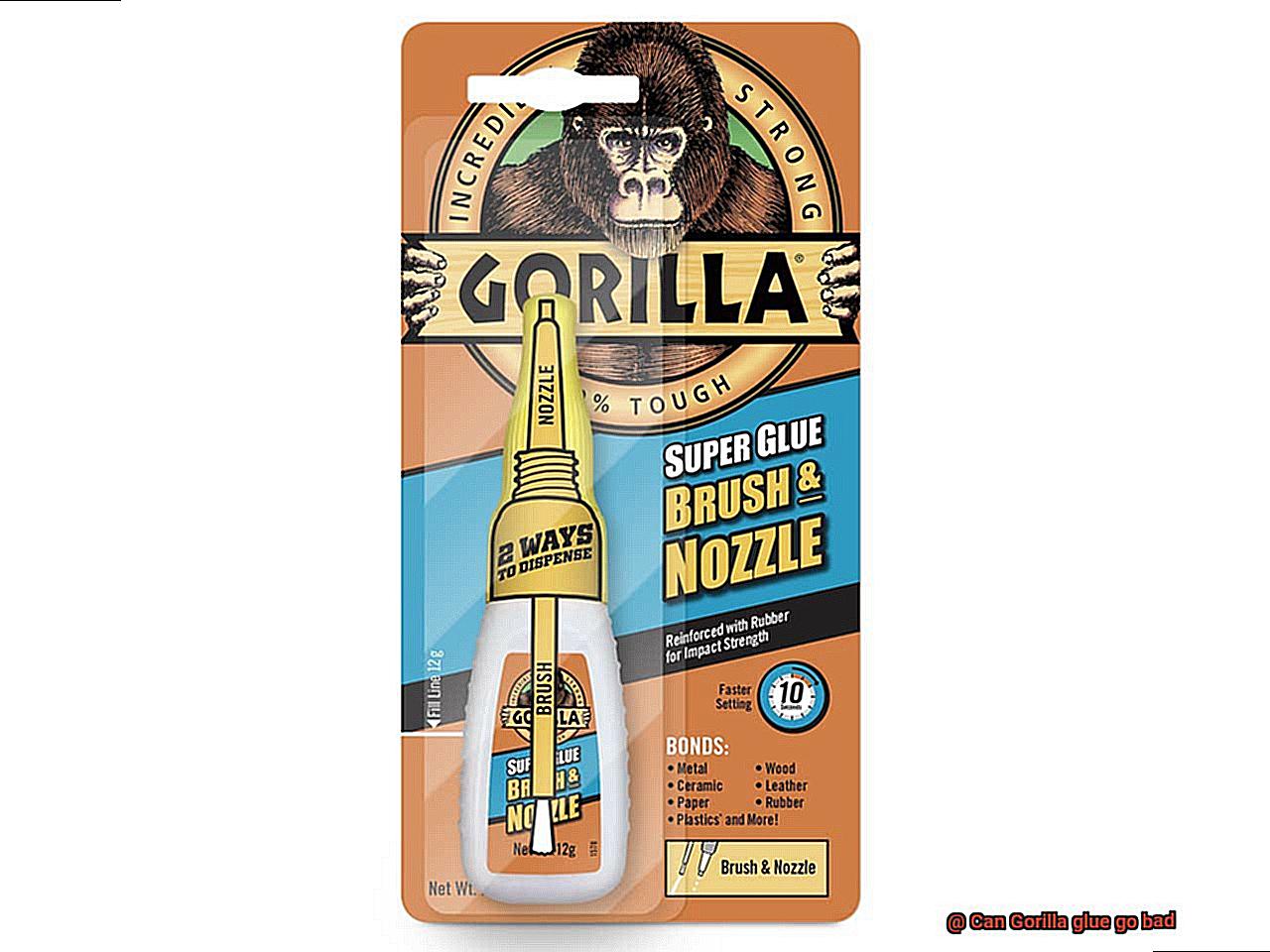
Signs of Expired Gorilla Glue
The signs of expired Gorilla Glue are important to be aware of to ensure the effectiveness of this adhesive for various projects. Here are the key signs to look out for:
- Change in consistency: Fresh Gorilla Glue has a thick, syrup-like consistency that flows smoothly when applied. However, as it ages, the glue may become thicker or even gel-like. This change in texture can make it difficult to work with and may affect its bonding strength. Imagine trying to spread thick, lumpy glue on surfaces – not an ideal situation for achieving a strong bond.
- Change in color: Fresh Gorilla Glue is typically an off-white color, indicating its freshness and potency. However, expired glue may turn yellowish or even brown. This discoloration is often a result of the glue’s exposure to air and moisture over time, causing oxidation. While the color change may not render the glue completely ineffective, it can be an indication that the adhesive properties have been compromised – a visual cue that it’s time to replace the glue.
- Smell: Fresh Gorilla Glue has a distinct chemical odor that is often described as strong or pungent. It’s an unmistakable scent that lets you know the adhesive means business. However, as the glue ages, this odor may become less pronounced or even develop a sour or rancid smell. If you detect a noticeably different or unpleasant odor, it is likely past its prime – an olfactory signal that it’s time to bid farewell to your expired Gorilla Glue.
- Decreased bonding strength: Expired Gorilla Glue may have difficulty adhering properly. The adhesive properties of the glue may diminish over time, resulting in weaker bonds or even complete failure to adhere surfaces together. Picture your carefully crafted project falling apart due to weakened bonding strength – not a scenario any DIY enthusiast wants to face.
While expired Gorilla Glue may still be usable for certain applications, it is recommended to use fresh adhesive for critical projects where maximum bonding strength is required. To prevent Gorilla Glue from expiring prematurely, store it properly in a cool, dry place away from direct sunlight and extreme temperatures. Ensure the cap is tightly sealed after each use to help prolong the shelf life of the glue.
How to Test if Gorilla Glue Has Gone Bad
Gorilla glue, a renowned adhesive known for its strength and versatility, can lose its effectiveness over time. To ensure your Gorilla glue is still usable, it’s essential to know how to test if it has gone bad. This article will outline five simple methods you can use at home to determine the condition of your Gorilla glue.
Check the Expiration Date:
Begin by checking the expiration date on the bottle. Gorilla glue typically has a shelf life of one to two years from the date of purchase. If it has exceeded the expiration date, its performance may be compromised, making it less effective.
Examine the Consistency:
Fresh Gorilla glue should have a thick, syrup-like consistency akin to honey. If the glue appears watery or thin, it may have deteriorated and become unusable. Look out for any lumps or clumps in the glue as they could be an indication of degradation.
Observe the Color:
Fresh Gorilla glue often has an off-white or light yellow color. Any significant changes in color, such as darkening or discoloration, may suggest that the glue has gone bad and should not be used.
Smell the Glue:
Fresh Gorilla glue typically emits a mild, slightly sweet odor. However, if you detect a strong or unpleasant smell, it could indicate that the glue has deteriorated and is no longer effective.
Conduct an Adhesive Test:
To conduct an adhesive test, apply a small amount of the glue to a scrap piece of material and allow it to dry fully according to the manufacturer’s instructions. Once dry, attempt to bond two pieces of the material together using the dried glue. If the bond is weak or easily breaks apart, it may indicate that the glue has expired or degraded.
Disposal of Expired or Unusable Gorilla Glue
Proper disposal methods for expired or unusable Gorilla Glue are essential to protect the environment and prevent any potential hazards. Here are some tips to help you dispose of Gorilla Glue responsibly:
- Determine the state of the glue: Check if the glue has solidified or is still in liquid form. This will determine the appropriate disposal method.
- Solidified glue: If the Gorilla Glue has solidified, you can safely throw it away in your regular trash. Seal it in a plastic bag to prevent leaks.
- Liquid glue: If the Gorilla Glue is still in liquid form, take extra precautions. Pouring it down the drain or throwing it in the trash can harm the environment.
- Get a sealable container: Look for a container made of plastic or glass with a tight-fitting lid. This will prevent leaks and spills.
- Transfer the glue: Carefully pour the expired Gorilla Glue into the container without spilling any. Use a funnel to avoid messes.
- Secure the container: Ensure that the lid is tightly secured to prevent leaks and fumes from escaping.
- Label the container: Clearly label it as “Expired Gorilla Glue” or “Unusable Gorilla Glue” to avoid confusion and accidental use.
- Check local regulations: Contact your local waste management facility or recycling center for proper disposal guidelines for chemical products like Gorilla Glue.
- Follow disposal instructions: Safely dispose of the container according to their instructions, which may include dropping it off at a designated location or arranging a pickup.
- 10. Minimize waste: Only purchase the amount of Gorilla Glue you need for your project. Properly store and handle the glue to extend its shelf life and usability.
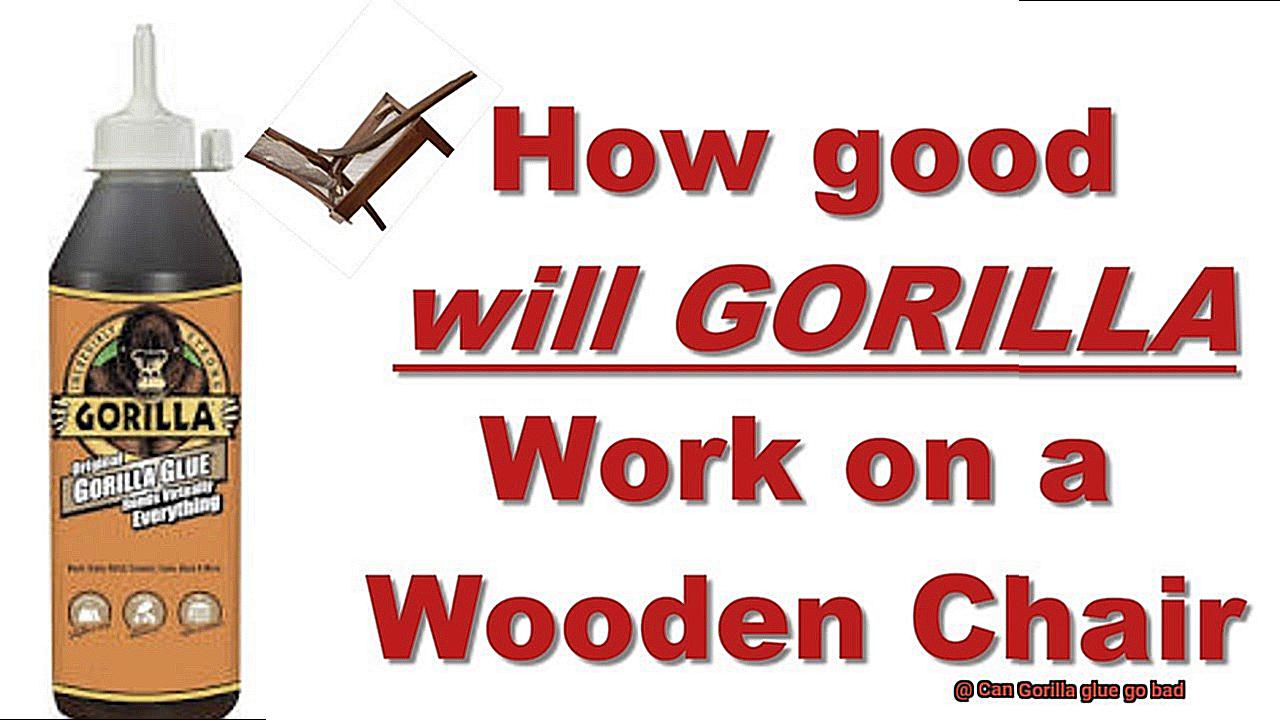
Conclusion
In conclusion, Gorilla Glue can indeed go bad over time. Factors like air exposure, temperature fluctuations, and moisture can all contribute to the degradation of this mighty adhesive. And when Gorilla Glue expires or deteriorates, its bonding strength and effectiveness may suffer.
So how do you know if your Gorilla Glue has gone bad? Well, there are a few unmistakable signs to watch out for. Changes in consistency, like thickening or the appearance of lumps, could be red flags that the glue is past its prime. And if you catch a whiff of an unpleasant or rancid odor, it’s a surefire indication that your glue has gone sour. Of course, checking the expiration date on the packaging is always a wise move.
To ensure your Gorilla Glue stays in tip-top shape for as long as possible, proper storage and handling are key. Keep it cool and dry, far away from extreme temperatures and any sneaky moisture lurking about. And after each use, seal that bottle up tight to prevent any unwanted air or moisture infiltration. If you suspect your Gorilla Glue has expired or notice any changes in consistency or funky smells, it’s best to bid it farewell and grab yourself a fresh bottle.
Now let’s not forget about safety. When working with Gorilla Glue, taking precautions is crucial. Slip on those protective gloves to shield your skin from potential irritations and make sure your workspace has good ventilation – we don’t want any fumes getting trapped in there.
By following these guidelines, you’ll unleash the full power of your Gorilla Glue and guarantee top-notch performance for all your DIY projects.


